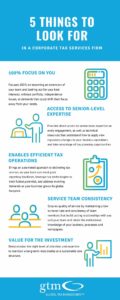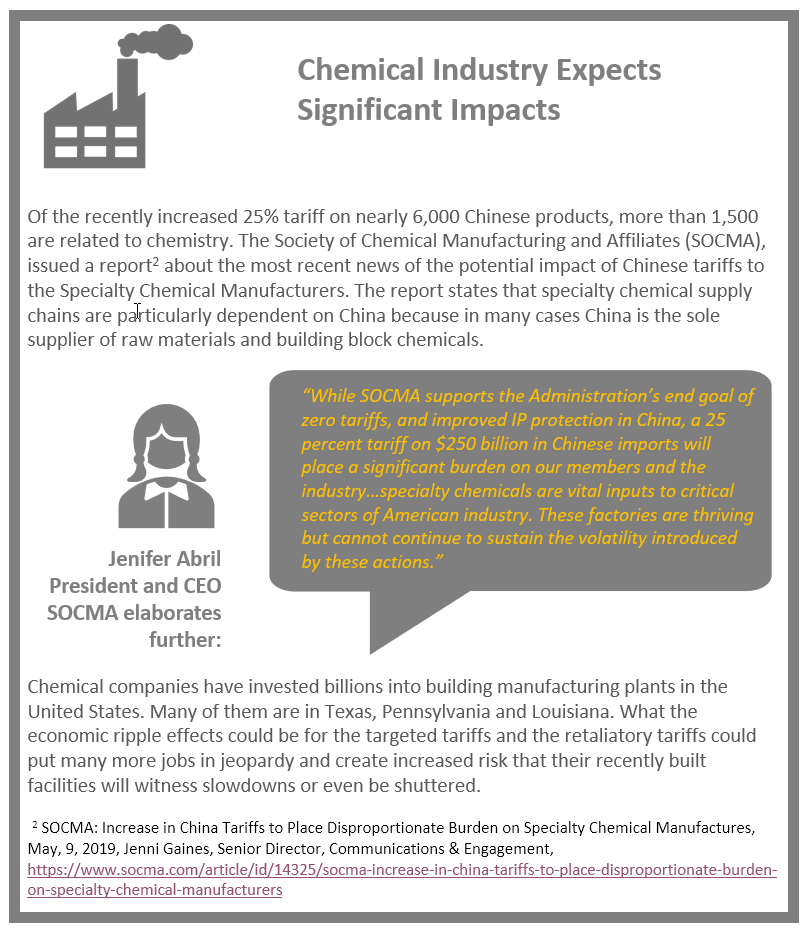Property Tax: The Ripple Effects of Tariff Wars Between the U.S. and China Property Tax Tariff Wars
By Bob Butterbaugh, Property Tax Practice Leader
The potential ramifications of tariff wars have once again become front page news. There have been ebbs and flows in the ongoing debate of what this could mean for the financial health of industries and the hypothetical reaction of consumers’ demand for products directly or indirectly targeted for imposition of higher tariffs or new tariffs.
Uncertainty in the macro-economic environment triggered by tariffs imposed by the U.S. and the retaliatory counter measures by China could lead to market actions and reactions that dramatically impact the values of the underlying assets of certain industries. Since real and personal property taxes are predicated on the market value of assets, it is important to first understand the potential impact of these variables, and then consider these factors in the assessed values subject to property taxation. In this post, I’ll also share a property tax strategy that can be used to offset the negative impacts of higher tariffs that appear to be imminent.
Product impacts
Decisions such as moving production out of China could be very expensive. Uncertainty may impact decisions on hiring, capital expenditures, and growth initiatives. The Tax Foundation, which is a tax policy nonprofit organization that often weighs in on economic policy, has estimated that tariffs which are already in place could shrink the size of the U.S. economy by $30 billion and eliminate nearly 100,000 fulltime jobs over the long haul.[1]
- Tariffs on about $200B of Chinese goods that were initially supposed to rise from 10% to 25% at the beginning of the year, which were postponed during trade negotiations, are officially back on the table as of 12:01 am Friday morning (5/10/19). In September 2018, the U.S. already imposed tariffs of 10% on Chinese goods valued at $200B which was met with retaliatory tariffs by China on U.S. goods valued at $100B.
- $325B of a much more comprehensive group of Chinese goods could also be hit with a 25% tariff. This more comprehensive list may affect more than 5,000 products made by Chinese factories and farms (foods, chemicals, textiles, metalwork, building materials, electronics and consumer goods.)
- Additional China retaliatory tariff countermeasures were announced by China, imposing $60 billion on U.S. imports set to begin on June 1. Though major differences remain, there are theoretical opportunities and face-saving positions for a negotiated settlement before the real brunt of the tariffs go into effect.
Industry sector impacts
We can speculate with some reasoned logic about some of the potential ripple effects of the trade war and tariff policy decisions that may be triggered. Consider the following potential business impacts of the targeted tariffs:
- Product pricing decisions, such as how much of the higher costs directly attributable to the tariffs can be absorbed by customers before market demand for the associated products plummets;
- Capital spending freezes or slower pace for approval for existing or pending projects;
- Idling or lower utilization of current plant production lines;
- Higher raw materials and energy costs to produce products; and
- Complicated and rapidly evolving supply chain and distribution market metrics that can dramatically increase costs.
There are likely to be industry winners and losers. Some companies will elect to sit on the sidelines and wait for market equilibrium. However, other opportunistic cash-rich industry players could acquire smaller niche companies who cannot sustain the financial hit to their operations and do not have the liquidity to ride out volatility that is likely to continue.
What it all means for property taxation
Each of the above potential reactions by market participants, manufacturers, distributors, and consumers will produce profound impacts to business asset values that may be subject to real and personal property tax. It does not just stop with the manufacturing sectors, but the economic ripple effects extend to the service and retail sectors that support state and local economies within the U.S.
The property tax statutes governing what is taxable, the standard of value, and equalization between classifications of taxpayers are unique to each state. However, assessed values of property, plant, and equipment are predicated on standard appraisal theories.
One such standard appraisal consideration deals with economic factors that are external and not within the property owner’s control, commonly known as economic obsolescence. External factors such as increases in the cost of materials and supplies related to the usage of equipment or reduced demand for products made utilizing the equipment could cause a loss in value for the assets of a business.
The referenced tariff economic ripple effect factors must be considered in developing the assessed values of the underlying assets. However, the assessor who uses mass appraisal techniques and outdated economic information may not consider and adjust the values of the assets subject to these economic developments unless the taxpayer provides the basis for the valuation impact on their business assets.
Consider economic obsolescence as a savings strategy
Quantifying economic obsolescence for assets impacted by the tariffs is more than just an appraisal concept. It’s an adjustment to the values for impacted assets which properly takes into consideration the tariff-related economic factors and could result in significant tax savings. For example, if a chemical processing facility in Texas could verify that the economic impact of the imposed tariffs and related market actions resulted in plant production volumes which plummeted to levels well below its designed capacity, a solid basis for an economic obsolescence adjustment can be made.
Substantiating a position for economic obsolescence must be fully supported with facts, utilize standard appraisal methodologies, and adhere to state-specific statutes, case law, and assessment practices. Having a clear understanding of the factual evidence of higher production costs or lower operating levels through imposed tariffs and other economic developments that are specific to your company’s assets is a critical first step to take. Substantiation of a defensible position for economic obsolescence will be much stronger with this underlying evidence in order to obtain fair and equitable assessments and realize property tax savings for specific assets in local taxing jurisdictions throughout the U.S.
About GTM’s Property Tax Services
GTM has the both the expertise and track record of assisting clients in recognizing macro-economic events such as the economic ripple effect of this new era of ramped-up tariffs, and developing a supportable basis for economic obsolescence based on sound appraisal theory. Even if the markets stabilize from the most dramatic immediate volatility, there are other economic events that are likely to replace the headlines that may also have a significant impact on market values. Contact Bob Butterbaugh if you would like additional guidance on developing a credible basis for adjustments in market value with assessment officials in order to obtain fair and equitable assessed values of your personal and real property.
[1] The Impact of Trade and Tariffs on the United States, by Erica York, June 27, 2018, https://taxfoundation.org/impact-trade-tariffs-united-states/




